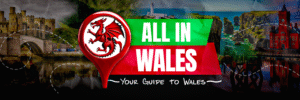
If you’re planning a trip to Wales and trying to understand its geography, you might find yourself confused by the question: “How many counties are there in Wales?” The answer isn’t as straightforward as you might expect, and it’s a question that even confuses some locals!
The Short Answer
Modern Wales has 22 principal areas (often called counties), which have been in place since 1996. These are the administrative divisions you’ll encounter when traveling, booking accommodations, or planning your Welsh adventure.
Why the Confusion?
Unlike many countries with a single, clear-cut administrative system, Wales has layers of history that make things a bit more complex:
Historic Counties (13)
Before 1974, Wales had 13 traditional counties that existed for centuries. These names still appear on vintage maps, in literature, and in cultural references:
- Anglesey (Ynys Môn)
- Caernarfonshire
- Denbighshire
- Flintshire
- Merionethshire
- Montgomeryshire
- Cardiganshire
- Carmarthenshire
- Pembrokeshire
- Radnorshire
- Brecknockshire
- Glamorgan
- Monmouthshire
The 1974-1996 System (8)
From 1974 to 1996, Wales was divided into 8 counties, which reorganized the traditional boundaries into larger administrative units.
Current System (22)
Since 1996, Wales operates under 22 unitary authorities or principal areas. These combine the functions of both county and district councils, making local government more streamlined.
The 22 Principal Areas of Wales
Here’s the complete list of modern Welsh counties, organized by region to help you plan your travels:
North Wales
- Isle of Anglesey (Ynys Môn) – Island separated from mainland by the Menai Strait
- Gwynedd – Home to Snowdon (Yr Wyddfa), Wales’ highest mountain
- Conwy – Medieval castles and coastal beauty
- Denbighshire (Sir Ddinbych) – Rolling hills and historic market towns
- Flintshire (Sir y Fflint) – Industrial heritage and coastal paths
- Wrexham (Wrecsam) – Wales’ largest town and brewing heritage
Mid Wales
- Powys – Wales’ largest and most sparsely populated county, stunning countryside
- Ceredigion – Wild Atlantic coastline and university town of Aberystwyth
South West Wales
- Pembrokeshire (Sir Benfro) – Spectacular coastal national park
- Carmarthenshire (Sir Gaerfyrddin) – Rural charm and Dylan Thomas connections
- Swansea (Abertawe) – Wales’ second city with beautiful Gower Peninsula
- Neath Port Talbot (Castell-nedd Port Talbot) – Industrial heritage meets natural beauty
South East Wales
- Cardiff (Caerdydd) – The vibrant Welsh capital
- Vale of Glamorgan (Bro Morgannwg) – Heritage coastline near Cardiff
- Bridgend (Pen-y-bont ar Ogwr) – Gateway to valleys and coast
- Rhondda Cynon Taf – Historic coal mining valleys
- Merthyr Tydfil (Merthyr Tudful) – Industrial revolution birthplace
- Caerphilly (Caerffili) – Famous castle and Welsh cake territory
- Blaenau Gwent – Dramatic valley landscapes
- Torfaen – Compact county with Roman history
- Monmouthshire (Sir Fynwy) – Border county with English influences
- Newport (Casnewydd) – Historic port city with Roman heritage
What This Means for Travelers
Planning Your Route
Understanding Wales’ 22 counties helps you plan logical travel routes. The country is roughly 170 miles (274 km) north to south and 60 miles (97 km) east to west, making it possible to experience multiple counties in a single trip.
Cultural Differences
Each county has its own character, dialect variations, and traditions. North Wales (particularly Gwynedd and Anglesey) has the highest concentration of Welsh speakers, while the South Wales Valleys have distinct industrial heritage and tight-knit communities.
Practical Considerations
- Postal addresses use the current 22 principal areas
- Tourist information is organized by these modern counties
- Transport planning follows these boundaries
- Accommodation searches typically use these county names
Regional Groupings for Travelers
To simplify your planning, Wales is often divided into broader tourist regions:
North Wales – Snowdonia mountains, castles, and coastal resorts Mid Wales – Rural heartland, mountains, and market towns
West Wales – Pembrokeshire Coast, Cardigan Bay South Wales – Cities, valleys, and the Brecon Beacons Southeast Wales – Capital city Cardiff and surrounding valleys
Quick Tips for Global Travelers
Language: You’ll see bilingual signs everywhere. Welsh (Cymraeg) appears first, English second. Don’t be intimidated by the Welsh place names – locals are happy to help with pronunciation!
Size: Wales is compact at 8,023 square miles (20,779 km²) – roughly the size of New Jersey or Slovenia. You can drive from north to south in about 3-4 hours, though you’ll want much longer to explore.
Navigation: Use the modern 22 county names for GPS and bookings, but don’t be surprised if locals refer to historic county names, especially in rural areas.
Best Approach: Rather than trying to visit all 22 counties, focus on 3-5 that match your interests – whether that’s coastal walks, mountain hiking, castle exploration, or city culture.
The Bottom Line
So, how many counties are there in Wales? 22 principal areas for practical purposes, but with layers of historic counties that add richness to Wales’ identity. For your travel planning, stick with the modern 22, but embrace the historic names you’ll encounter along the way – they’re all part of what makes Wales such a fascinating destination.
Whether you’re exploring the dramatic peaks of Gwynedd, the coastal paths of Pembrokeshire, or the vibrant streets of Cardiff, each of Wales’ counties offers unique experiences that reward curious travelers. The beauty of Wales lies not in checking off all 22 counties, but in discovering the distinct character of whichever corner of this remarkable country you choose to explore.
Further article guides that may interest you:
What is the Population of Wales? Understanding Welsh Demographics
What to Do in Wales? A Land of Castles, Coastlines Celtic Spirit

